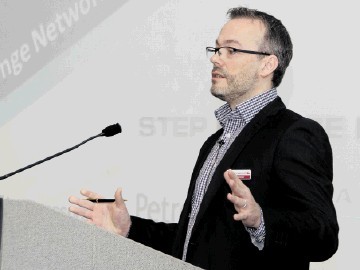
Supposing someone was to ask you “what is the safety culture like where you work?” How would you begin to answer that? Perhaps in your workplace, safety is so ingrained in every system and process; right down to everyone remembering to hold the handrails.
A genuine safety culture, however, is about much more than employees simply complying with the rules – there has to be two-way communication between leaders and employees. Therefore a workplace with a good safety culture is a workplace which also demonstrates workforce engagement.
But what do we mean by workforce engagement?
It involves the workforce “buying-in” to a company’s efforts to improve safety performance, but it’s more than that. It’s about having a culture where the workforce is actually leading these efforts, by being able to influence decisions around their own safety and that of their colleagues.
In order to do this, the workforce must feel that they are part of a culture where they can participate in – and indeed challenge – how safety is managed where they work.
At this point you might ask why this even matters. As long as everyone sticks to the rules, everyone goes home safe, right? Perhaps – but simply sticking to the rules doesn’t get you any further down the path of improvement.
There is clear evidence that a fully engaged workforce is a crucial driver of continuous improvement. This means not only a safer workplace but also improved overall business performance. Therefore the argument for workforce engagement is unequivocal.
It’s perhaps no surprise then that, for some time, Step Change in Safety has had a strong focus on workforce engagement as we continue on our journey towards making the UK the safest place to work in the worldwide oil and gas industry.
This month sees the launch of our Workforce Engagement Toolkit, which has the potential to positively transform the way companies interact with staff and improve safety at worksites.
The toolkit comprises practical guidance which has been designed to help companies measure workforce engagement at individual worksites, identify areas of improvement and give guidance on how to facilitate improvement.
It’s the culmination of many years of work carried out by Step Change’s Workforce Engagement Steering Group, lead by its co-chairs Ian Sharp and Mike Bowyer, with input from the HSE’s Steve Walker and RMT’s Jake Molloy.
One part of the toolkit is a purpose-designed survey, which can be completed either online or on paper by every employee at a worksite, regardless of their employer.
The survey asks a series of questions which encourages the person completing it to think about a number of factors which can then help determine the level of workforce engagement at a site.
These include, for example, how visible they think leaders are, how much they feel they are encouraged to participate in safety and how well they think leaders communicate and act to address safety issues.
Crucially, all input gathered is kept totally confidential. Data is submitted directly to Step Change and then a summary report is issued back to the worksite.
The results should then help leaders understand their own worksite-specific areas of strength and weakness and help develop improvement plans. Once they have identified the obstacles which are deterring effective engagement, they can work collectively to remove them.
In addition, the results can be benchmarked against other worksites across the industry to see how they’re performing as part of the bigger picture – something which has never been done before. The survey can then be repeated at a later date to gauge the success of the improvement effort.
If widely adopted, the toolkit promises to positively transform workforce engagement and has the potential, over time, to be a fourth “leading” indicator of safety performance. The gravity of this should not be underestimated.
The path of continuous improvement in safety performance can be thought of as a process, and this process must start with a desire for change.
In order for the workforce to feel able and willing to challenge and participate fully, influential people such as supervisors, site leaders and senior managers have to openly demonstrate the behaviours which make a genuine safety culture conducive.
Making themselves more visible and open to the workforce and communicating effectively can encourage involvement and help foster a culture of engagement in health and safety; the benefits of which will be felt by all.
Les Linklater is team leader – Step Change in Safety
Recommended for you
